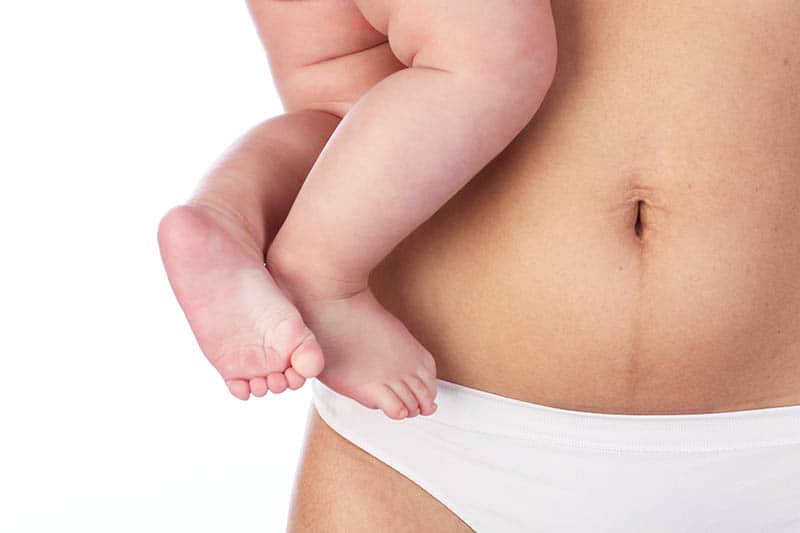Pregnancy is an experience like no other – it affects a woman’s body so deeply that the recovery process itself can take a significant amount of time.
If you were to ask me what to expect from your postpartum body, I wouldn’t know where to start!
But since your recovery will last for weeks, it’s important to know how your postpartum body will change from the moment of your baby’s arrival.
From the immediate pain and discomfort felt in the perineal area after giving birth that lasts for weeks, the heavy bleeding that accompanies it, along with the contracting uterus, your body will be hard at work in order to heal you.
But there are also less obvious postpartum body changes that are invisible to the naked eye and affect our mental wellbeing, such as the intense mood swings that the vast majority of moms experience in the first weeks following labor.
Some moms even power through postpartum depression while caring for an infant, so the recovery period can be unexpectedly long and hard.
That’s why it’s important to know what to expect and be attuned to your postpartum body in order to be able to recognize when something isn’t going according to plan and get in touch with a doctor.
From hair loss to C-section specifics, I’ve covered some of the most common things to expect from your post baby body – so happy recovery!
Perineum soreness

But even if you have had a C-section, you might feel a little bit of pain or discomfort. (However, we will talk about postpartum changes after a C-section later)
This is entirely normal, as you have just pushed out a tiny human being from your body after hours of labor!
Still, there are different degrees to this soreness depending on how easy or difficult the birth was.
But to make it a little better you can use some of the products for a postpartum care treatment like the Sitz bath salt.
- A soothing soak that aids in postpartum recovery and hemmoroid treatment
- Mood-boosting botanicals and energizing aromatics help fight baby blues and promote a balanced mind
- Combines soothing herbs, essential oils, and ingredients to relieve the discomfort of sore muscles
Prices pulled from the Amazon Product Advertising API on:
Product prices and availability are accurate as of the date/time indicated and are subject to change. Any price and availability information displayed on [relevant Amazon Site(s), as applicable] at the time of purchase will apply to the purchase of this product.
Generally speaking, if there was no tearing, then you will feel tenderness and swelling for as long as a month and up to 5 weeks, even.
If you’ve had some tearing, then your recovery might be a bit longer and more uncomfortable.
During the healing process, the wound will hurt so it’s important to follow proper medical advice and keep the area clean.
Touching the wound should be avoided, as well, because it could possibly lead to an infection or prolong the healing.
The wound should feel better in a week to 10 days but you can still expect your perineum to feel sore for a month and a half – maybe even longer.
If you had an episiotomy during labor, where the doctor or midwife makes the cut themselves without waiting for the area to tear, you can expect a similar healing process.
Swelling

While most new moms aren’t surprised to find some parts of their body swelling up during pregnancy, they might be taken aback to find that swelling can also occur as their body changes after labor.
Postpartum swelling happens as a result of labor, when the pushing causes the fluid to move to your legs, face, and hands.
This type of swelling can be uncomfortable but if you start feeling pain, then you should get in touch with your doctor.
To help with the swelling, you can try doing some of the following:
- Wear comfortable clothing that isn’t too tight – the same goes for shoes;
- Apply an ice pack or a cold washcloth to the swollen area;
- Avoid food that’s high in sugar and sodium;
- Try not to stand for long periods of time;
- While sitting down, keep your feet lifted.
| Image | Title | Price | Buy |
|---|---|---|---|
 | MAXMODA Maternity Nursing Pajamas Set Hospital Sleepwear Pregnancy Loungewear Breastfeeding Pjs | Buy Now | |
 | Medline MDS138055 Standard Perineal Cold Packs, 4.5" x 14.25", Pack of 24, Green | Buy Now |
Uterine contractions

After the baby’s arrival, however, it can’t exactly snap back to how it was pre-pregnancy!
Instead, the uterus slowly begins to shrink, which leads to some uncomfortable contractions that are very similar to menstrual cramps.
Usually, they’re most painful in the days that immediately follow the birth and hurt less and less as the days go on.
By the time your little one is a week old, they should have completely disappeared (although sometimes they might last as long as 10 days).
Most moms don’t have much trouble with these contractions but for some quick relief, you can use a heat pad to gently warm your abdomen and ease the pain.
Lochia or vaginal bleeding

For up to 6 weeks postpartum, new moms will experience lochia, a kind of vaginal discharge that’s a completely normal part of postpartum recovery.
This type of bleeding is quite heavy in the first week postpartum, which is why new moms wear maternity pads that are big enough to absorb all the blood.
Using tampons, on the other hand, should not be done after you give birth.
- Kit contains top selling Maternity pads Item number 2022A plus 1 Vakly Postpartum visit Question guide.
- Maternity pads are soft and comfortable for light postpartum care.
- Pads are 4.33 inches (10.99 cm) wide by 12.25 inches (31.11 cm) long.
Prices pulled from the Amazon Product Advertising API on:
Product prices and availability are accurate as of the date/time indicated and are subject to change. Any price and availability information displayed on [relevant Amazon Site(s), as applicable] at the time of purchase will apply to the purchase of this product.
After the first 7 to 10 days post-baby, you may still experience some light bleeding that can continue for a month to a month and a half.
While lochia doesn’t usually cause any health problems, you should call your doctor if you experience any of the following:
- Having to change your pad on an hourly basis;
- A strange, uncomfortable smell coming from the discharge;
- Big clots.
Breast changes

Post-pregnancy changes aren’t only limited to the lower half of your body – your breasts are also part of the list!
After giving birth, your breasts will get bigger as they fill up with milk for you to feed your baby.
And if you decide not to breastfeed, your body will gradually stop producing milk altogether.
Breastfeeding moms can also experience other health issues related to nursing their babies, such as sore and cracked nipples, which can be treated with different kinds of nipple cream or nipple pads.
| Image | Title | Price | Prime | Buy |
|---|---|---|---|---|
 | Lansinoh Lanolin Nipple Cream for Breastfeeding, 1.41 Ounces | PrimeEligible | Buy Now | |
 | Lansinoh Stay Dry Disposable Nursing Pads for Breastfeeding, 240 count | PrimeEligible | Buy Now |
In addition, breastfeeding can cause a kind of pain called transient soreness in the first weeks after beginning nursing.
However, it should be gone after 2 weeks and any persistent pain after this mark is a sign that you need to talk to a medical professional.
Some women also experience breast engorgement, which is when the breasts fill up with so much milk that it becomes painful, so breastfeeding can have a big impact on your post baby body.
But from my experience with moms, many of them are very interested to know how their breasts will change in the long term and whether nursing their baby contributes to this.
The truth is, no matter if you breastfeed or not, your breasts won’t be the same size or shape as they were before the baby.
However, factors such as age, how much you weigh, and how many pregnancies you have had can contribute to a bigger difference in how your breasts look pre- and post-baby.
Weight loss
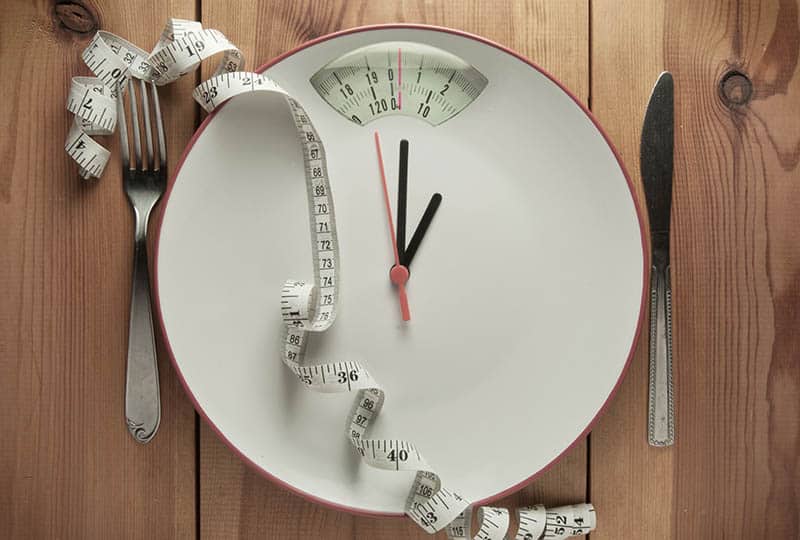
Plus, looking the way they did before the baby can help them feel like their “old” selves, making the transition to motherhood much easier.
Some women don’t gain as much weight during pregnancy compared to others, which can be caused by a variety of factors – a healthy diet, most importantly.
And you can definitely expect some of that weight to go away on its own, without any sort of exercise.
Around a month and a half post-birth, you will have lost around 50 percent of the weight you gained during the pregnancy.
While it is true that you will lose around 13 pounds immediately following birth because the amniotic fluid, placenta, and the baby have now left your body, anything extra that was gained while you were pregnant will stay.
But generally speaking, most moms go back to their original weight around 6 months to a year after giving birth to their new baby.
Breastfeeding actually contributes to weight loss as it helps you burn calories, so if you are planning on nursing, know that it will play a part in how much weight you lose.
Hair loss
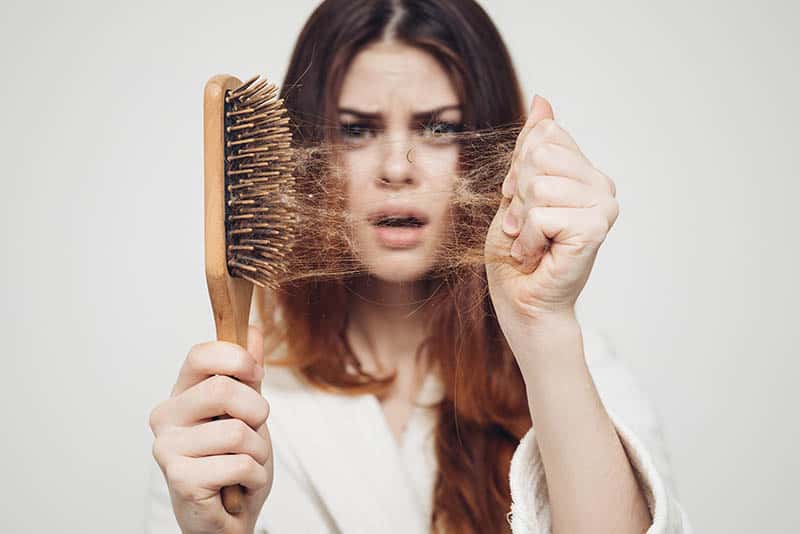
Losing hair, however, is a slightly less known body change that follows a pregnancy – but in no way less common!
Most women are very sensitive about the appearance of their hair, so even the smallest changes to its fullness or texture can lead to panic.
The thing is, we lose hair every day but because the loss is gradual, we never notice it as much.
During pregnancy, however, all the hormonal changes in a woman’s body lead to less hair loss. Some women even find that their nails grow faster than before!
Sadly, this is not permanent.
All of that hair that hadn’t fallen out while you were carrying your little one will begin to shed in the months following the birth.
Although in some cases, women who breastfeed find that they don’t lose their hair as quickly as their non-breastfeeding counterparts.
But whether you’re finding clumps of hair at the bottom of your shower or not, there is no need to panic! Your hair will go back to normal – usually around one year postpartum.
Of course, there are always things you can do to minimize how much hair you lose during this period.
They include avoiding blow-drying your hair or using any kind of styling tool, especially flat-irons or hair curlers, as the heat from these devices can damage your hair.
But if you’re worried that washing your hair as often as you’re used to will only cause more hair to fall out, you can rest assured that shampooing won’t have a negative impact on your hair – it will fall out one way or another.
It’s important, though, to make sure you’re getting enough protein in your diet as this will help new hair grow.
And even though you’re not pregnant anymore, continuing to take your prenatal supplements will ensure you’re as healthy as possible and promote hair growth.
- OMEGA-3 DHA is a fatty acid that aids in your baby’s brain and eye development. DHA is an important nutrient for babies before and after they’re born. Enfamom has expert-recommended levels of DHA (200 milligrams daily)
- CALCIUM is important for the development of your baby’s precious little bones. Even though foods like yogurt and cheese contain calcium, a prenatal vitamin helps make sure that you and your baby are getting the recommended amount. This is especially important if you are lactose intolerant or just aren’t fond of dairy. Enfamom Advanced Prenatal Multivitamin was created with 25% MORE CALMIUM vs. other leading brand.
- ACTIVE FOLATE is a B vitamin and is an absolute must for expecting moms. Folate acts by nourishing your baby’s developing nervous system and protecting them against certain birth defects, including spinal cord and brain abnormalities.
Prices pulled from the Amazon Product Advertising API on:
Product prices and availability are accurate as of the date/time indicated and are subject to change. Any price and availability information displayed on [relevant Amazon Site(s), as applicable] at the time of purchase will apply to the purchase of this product.
The entire process might take time but take comfort in knowing that many other moms have gone through the same experience and have come out with their hair intact, and it’s likely you will, too!
Urinary incontinence

Sneezing, laughing, or coughing seems like such an innocent activity, right?
But for new moms, it very often leads to unexpected peeing or urinary incontinence, if you would like a more medical term.
Losing control of your bladder is definitely something to expect from your postpartum body but luckily there are ways of dealing with this uncomfortable change.
But first, let’s tackle what causes urinary incontinence in the first place.
Usually, the abdominal muscles are responsible for making sure you don’t pee yourself even when you feel like you really need to go – they are the ones that help you “hold it in”.
These muscles surround your pelvis and bladder, an area that goes through an incredible transformation first during pregnancy, and then labor.
After giving birth, the abdominal muscles just aren’t as strong as they were before.
Plus, your uterus (which is still not back to how it was prior to the pregnancy) is pushing down on your bladder, too.
Add all of these factors together and you get the perfect recipe to accidentally pee your pants when sneezing!
The most important thing you can do to fight urinary incontinence are Kegel exercises, which will help you strengthen your pelvic floor muscles.
If you’re not sure how to locate your pelvic muscles, there’s an easy trick you can do to identify them.
While you’re urinating, suddenly stop halfway and notice which muscles have become active – these are the pelvic floor ones.
Before doing your Kegels, it’s important to go to the bathroom first so that your bladder is empty.
You can do these exercises either while lying on the floor, or while sitting down, whichever works better for you.
Then, tighten your pelvic floor muscles and relax them in 5-second increments (if 5 seconds is too much for you, start with 3 and then work your way up).
Try to do as many of these repetitions as possible – at least 10 but ideally 30 – and try to do them more than once a day.
One series in the morning, one in the afternoon, and one before going to bed should keep you on the right track.
I know that doing any sort of workout might seem too much now but Kegels are a very simple exercise that can make the world of difference in this area.
However, you should not avoid drinking water to reduce the number of times you need to go to the bathroom, as this can only lead to dehydration.
But do try to stay away from drinks such as soda and coffee – they always make you run to the bathroom faster.
If you’re worried that you might slip up when you’re not at home, wearing a maxi pad can help soak up any leaks and save you from uncomfortable situations.
Also, staying on top of your bathroom visits can reduce the chances of accidental leakage, so don’t wait until you really need to pee to go to the bathroom.
As for when you can expect to be in charge of your bladder again – it depends but usually between 3 to 6 months postpartum is when you will notice things going back to normal.
Mood changes

But the postpartum period is not all sunshine and rainbows, as most moms know.
Mood changes, baby blues, and even postpartum depression are all part of the postpartum journey new moms embark on, so knowing what to expect will help prepare you for managing your mental health in the best way possible.
After all, caring for your postpartum body includes caring for your mind as well!
According to the American Pregnancy Association, as many as 80 percent of women go through mood changes that are negative in nature after the baby’s arrival.
Unfortunately, many of them are reluctant to be open about it because they are ashamed of experiencing such negative emotions after what is supposed to be one of the most important moments in their life.
Mood swings, or baby blues, are not as severe as postpartum depression and can begin several days after the birth and last for as long as 2 weeks.
Baby blues cover a wide range of symptoms that can vary from excessive crying to feeling very irritable and on edge, as well as being anxious and sad.
Dealing with these symptoms can be challenging but the first step is to acknowledge your emotions and talk about them with someone you can confide in.
Keeping a diary is also very helpful when managing any kind of mental health issue, and can be very beneficial in this scenario, as well.
If you’re not one for writing in a physical journal, there are many mobile apps that allow you to keep a diary and reflect on your thoughts and feelings as time goes on.
But how do you know when your baby blues are not a temporary mood change but actually constitute postpartum depression?
The first sign to look for is the duration of the symptoms, which is much longer when depression is concerned, and the symptoms themselves are so severe that they leave you unable to function normally.
For example, normal tasks you used to do every day without any trouble are now difficult, to the point where even taking care of your little one becomes a challenge.
Postpartum depression can manifest itself in a variety of ways, including crying, sadness, anxiety, lack of appetite, and in its most extreme form can even include thoughts of self-harm or suicide.
This is why reaching out to a medical professional is so important when you notice that your baby blues are lasting for longer than a week or two and are interfering with your daily life.
Even if you do get diagnosed with postpartum depression, this does not mean that you are failing as a mother – postpartum body changes can have an incredible impact on your emotional wellbeing but with the appropriate treatment, it can certainly be overcome.
Hemorrhoids
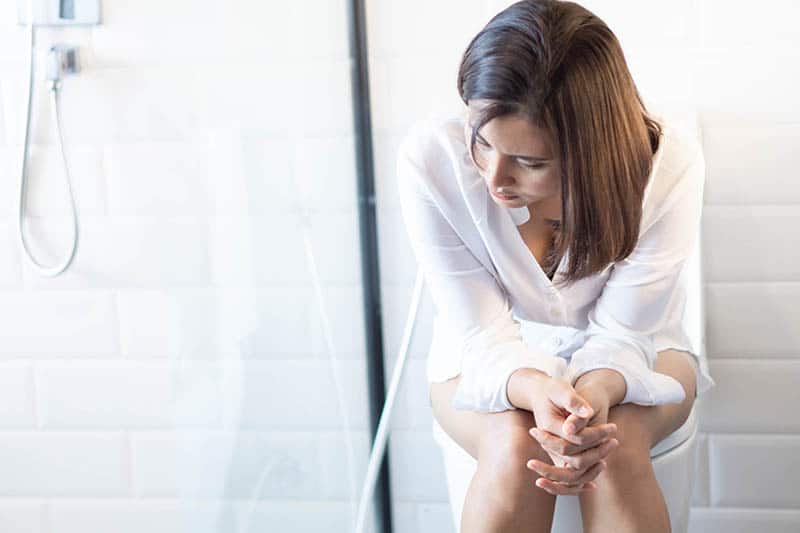
Many women notice them during their pregnancy due to the extra weight being placed on the lower part of their body.
If you were lucky and didn’t get them while pregnant, a vaginal delivery is usually the main culprit behind their appearance post-baby.
While hemorrhoids are by no means dangerous, they can be a big nuisance and make you dread going to the bathroom, so most moms want to get rid of them as quickly as possible.
Usually, they will go away on their own but there are many over the counter treatments that you can rely on to make this process faster.
One of them is this healing cream that helps you with burning and itching.
- FAST & EFFECTIVE - Fast absorbing easy to apply, effectively relieves itching, pain, burning, bleeding, discomfort, shrinks and reduces inflamed fissures, rectum, pregnancy piles, swollen hemorrhoidal tissue.
- NATURAL & SAFE - Apply with peace of mind, natural plant based astringent anti-inflammatory healing properties and pure therapeutic grade essential oils that provide max soothing relief without side effect.
Prices pulled from the Amazon Product Advertising API on:
Product prices and availability are accurate as of the date/time indicated and are subject to change. Any price and availability information displayed on [relevant Amazon Site(s), as applicable] at the time of purchase will apply to the purchase of this product.
It’s also important to eat food that contains plenty of fiber as this will help you avoid getting constipated which will only make matters worse.
Stretch marks
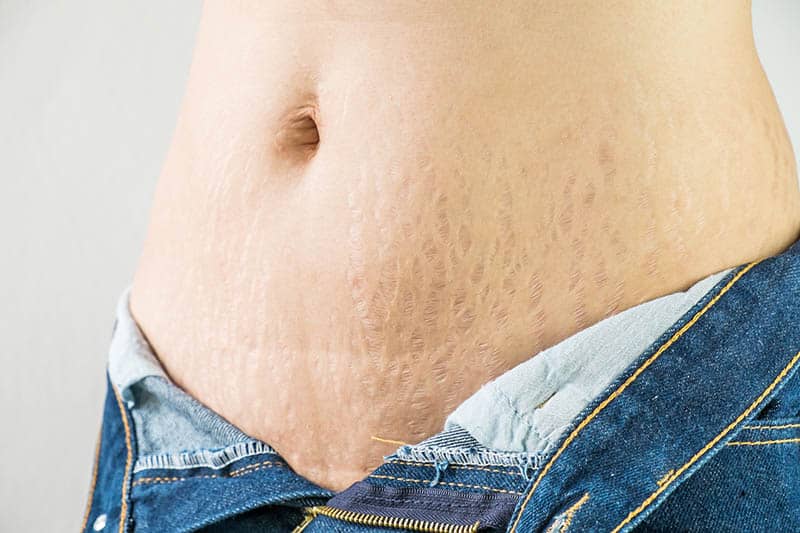
As your baby grows, so your skin stretches to accommodate the new life inside of you. With this rapid stretching, the vast majority of moms see stretch marks begin to form.
In fact, if you don’t have pregnancy stretch marks, then you are part of a much smaller mom club!
There are all sorts of creams, moisturizers, and scar removal sheets on the market that claim to help diminish the appearance of these marks, and stretch mark creams are a popular must-have item for the second trimester.
- Silicone Scar Removal - NuvaDermis is an advanced silicone treatment, clinically shown to flatten the scars appearance. It helps with most scar types caused by hypertrophic, post-acne, keloid, post-surgery, c-section, and stretch marks.
- Medical-Grade Ingredient- Scar sheets made of premium medical silicone help reduce the size of scars in 6 weeks for new scars, and 4 months for older ones. Silicone sheets improve the color and texture of scars, making skin smooth and soft.
- Easy To Apply & Remove - Our scar removal sheets are soft, lightweight, and breathable, allowing comfort wearing for 24 hours. They can be used all day & night with clothes on without leaving any residue behind. Forget about discomfort while wearing and peeling sheets off.
Prices pulled from the Amazon Product Advertising API on:
Product prices and availability are accurate as of the date/time indicated and are subject to change. Any price and availability information displayed on [relevant Amazon Site(s), as applicable] at the time of purchase will apply to the purchase of this product.
But whether you come out of your pregnancy with marks on your tummy or not has a lot to do with your genetics.
Of course, weight gain can also contribute to their appearance, as well.
While some moms don’t mind having stretch marks, others would rather do away with them. In this case, there are a number of treatments that you can pursue after you give birth (as they are not safe during pregnancy), such as laser treatment, that can be very effective.
For C-section moms
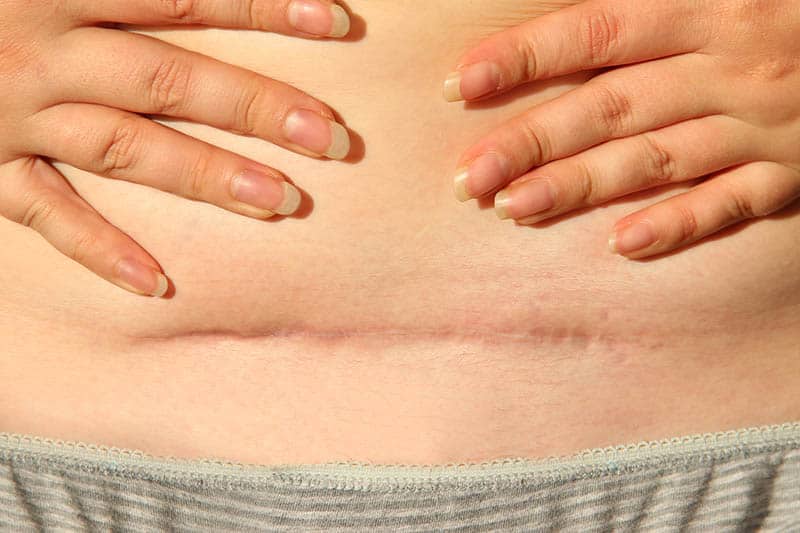
The incision scar itself will take some time to heal – a minimum of 2 weeks – during which you will need to take special care of yourself.
For example, lifting anything else other than your baby should be avoided as it will put unnecessary pressure on your abdomen.
On the other hand, this doesn’t mean you should spend the entire day lying down and avoiding all movement.
Going for a nice walk in your neighborhood will improve the healing process and getting out of the house for a little bit can be very beneficial for your mental health, as well.
Your nutrition shouldn’t be ignored either, and you should do your best to avoid processed foods but instead opt for healthier meals that will contribute to your recovery and healing.
Back pain
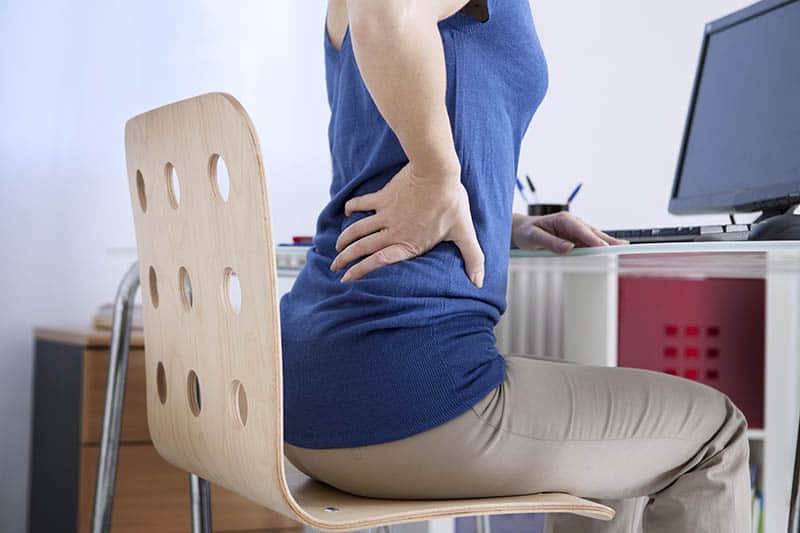
To minimize the discomfort, it’s important to do all the lifting from your knees.
While this is easier said than done, standing up straight and avoiding bending your back like a shrimp will take away some of the pain as well.
If you tend to bend your back a lot, tell someone in your household to let you know when they catch you hunched over as it can be quite difficult to change your posture on your own.
And whenever possible, try to sit down to give your back some relief.
Last but not least, getting a massage is a sure-fire way to give your muscles a break and relax in the hands of a professional!
To wrap up
Now that you’ve armed yourself with the knowledge of what to expect from your postpartum body, I hope you feel more confident in tackling any changes it throws at you!
Remember, some of these changes can take months so being patient with yourself and your body is very important during this time.
While some of you might be eager to get back into the swing of things and embrace some of your previous routines, a gradual change is best as the past 9 months have taken you on a real rollercoaster!
As you make your way through recovery, it’s really important to remember that certain things will never be the same again, and that’s perfectly okay.
Those little stretch marks on your belly or the few extra pounds you gained are just a beautiful reminder of the wonderful life you brought into this world, and you should definitely be proud of them!
References:
American Pregnancy Association. 2019, January 25. “Baby Blues”. American Pregnancy Association.
READ NEXT:
- How Postpartum Belly Binding Can Help You After Delivery
- An Easy Guide To Managing Your Afterpains and Postpartum Cramps
Like this post? Please share or pin it for later. You can also stay in the loop and follow us on Facebook, Instagram or Pinterest.
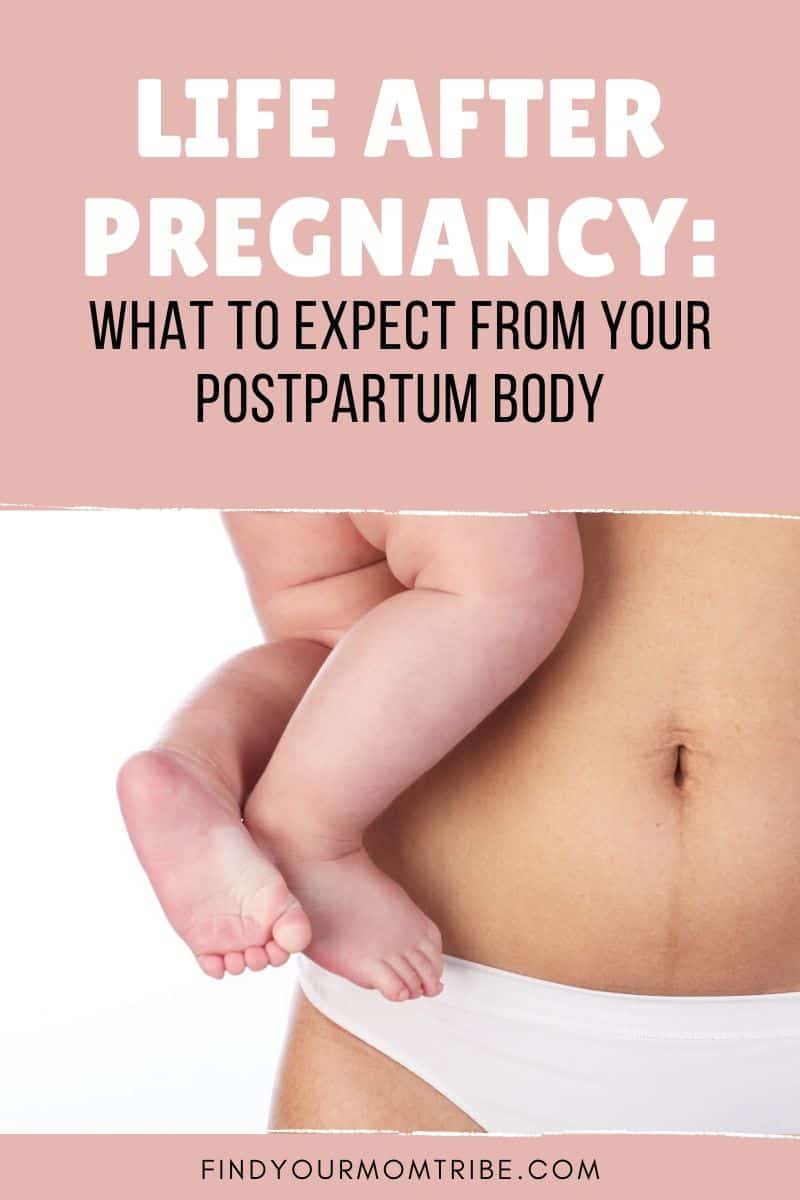
We love honesty! Find Your Mom Tribe is an Amazon Associate and we earn from qualifying purchases through affiliate links at no extra cost to you. Please see our full Amazon Affiliate disclosure for more information.

